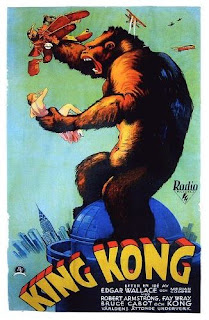Film Review One - The Cabinet of Dr Caligari
The Cabinet of Dr Caligari is a German horror/mystery film, it was directed by Robert Wiene. This film portrayed a hypnotist (Dr Caligari) who uses a somnambulist (a sleepwalker named Cesare) to commit murders. This storyline was written by Carl Mayer and Hans Janowitz and was released in Germany on the 27th February 1920 and then four years later in the UK on the 31st January 1924.
Overall, I had no strong feeling about this film in general, I believe it’s because it was the first silent film I have seen. Therefore, I did find the storyline a little difficult to follow, which was due to multiple reasons. One the quality of the film made it difficult knowing the difference between all of the characters. This is because of the resolution as both their clothing and facial features were difficult to depict between each of the characters. Alongside this, I personally found that the narrative of the film got dragged out a bit, as it felt like the pace of the storyline in the middle of the film went too slow.
On the other hand, I did like the interesting environment scenes. As it did not look like your typical town/village therefore, the shapes and patterns were really eye catching. As the majority of the film was a story being told gave a hint towards the narrator’s imagination and how he may have been exaggerating the story. “Remains terrifying nearly a century after it first stalked the screen” (Rotten Tomatoes, 2019). I felt that the music did help in creating the atmosphere and also in building up the suspense in some scenes. I believe music did have an effect on the outcome of the film by making members of the audience have the same or similar feelings that the characters are having, therefore makes the audience feel like they are a part of the story line.
This film was set in a village called Hostenwall, which is in Germany and I believe the time period was present date from when the film was released. The film starts with a man named Francis retelling this story to an elderly man. It was about a Fair that was in their village and someone named Dr Caligari got a permit for a somnambulist act. This leads to the somnambulist (a sleepwalker) who is named Cesare to go around the village committing multiple murders; one being a close friend of Francis. Francis is determined to find out who murdered his friend and follows Dr Caligari (who was a suspect) into and Asylum. At the end reveals the storyline twist that Francis (the narrator) was not the sane one after all and that he is under the delusion that Dr Caligari is the insane one.
One thing that stood out was the ability to link this story line to other films “Arguably the most visually influential movie of the silent period” (Kermode, 2019). This suggests that horror movies since then have been really influenced by the outcome of this film. One detail I noticed was the costumes and overall look of the characters for example the sleepwalker (Cesare) was dressed all in black, he was also tall and slender. This can link to villains within other horror films, I believe now it is an image people associate to these types of characters. Alongside this, the woman (Jane) was dressed all in white throughout the whole film, this highlights her as a character and it is also a representation of her purity. Which is also a common similarity within other films as well.
As the project I am currently focusing on is the environment, I watched this film with this topic in mind. “The jaw-dropping look, in which the sets are twisted and violent as the film’s antagonist.” (Theskinny, 2019). Straight away I noticed how twisted it was, with the shapes of the buildings and the pathways. Alongside this, I noticed how the paint on all of the walls of the buildings actually disconnects this environment from reality. Overall, I thought that this made the shadows, angles and the shapes difficult to pick out. I also noticed that within Dr Caligari’s cell the paintings on the walls looked like bacteria cells, alongside this the other paintings emphasise the imagination of the story and how aspects have been exaggerated. However, when Francis gets taken to his cell it looks exactly the same but with plain washed walls. This suggests the difference between the story that was being told and reality.
Another thing that stood out was the difference between the urban and nature environments. This is because the urban surroundings are full of different angles due to the buildings and structures, whereas the nature surroundings have no corners or sharp angles and at times feels like it can go on forever. I will take the differences between the two into consideration when I create my own environment. The asylum was separated from the village by a forest, I believed that they did this because they wanted to portray that the people within the asylum were disconnected from the rest of society.
Bibliography:
Kermode, M. (2019). The Cabinet of Dr Caligari review – a timeless classic and a visual archetype. [online] the Guardian. Available at: https://www.theguardian.com/film/2014/aug/31/cabinet-dr-caligari-review-mark-kermode-timeless-classic [Accessed 3 Oct. 2019].
Rotten Tomatoes. (2019). The Cabinet of Dr. Caligari (Das Cabinet des Dr. Caligari) (1920). [online] Available at: https://www.rottentomatoes.com/m/the_cabinet_of_dr_caligari [Accessed 3 Oct. 2019].
Theskinny (2019). How The Cabinet of Dr Caligari changed cinema - The Skinny. [online] Available at: https://www.theskinny.co.uk/film/opinion/how-the-cabinet-of-dr-caligari-changed-cinema [Accessed 3 Oct. 2019].

Comments
Post a Comment